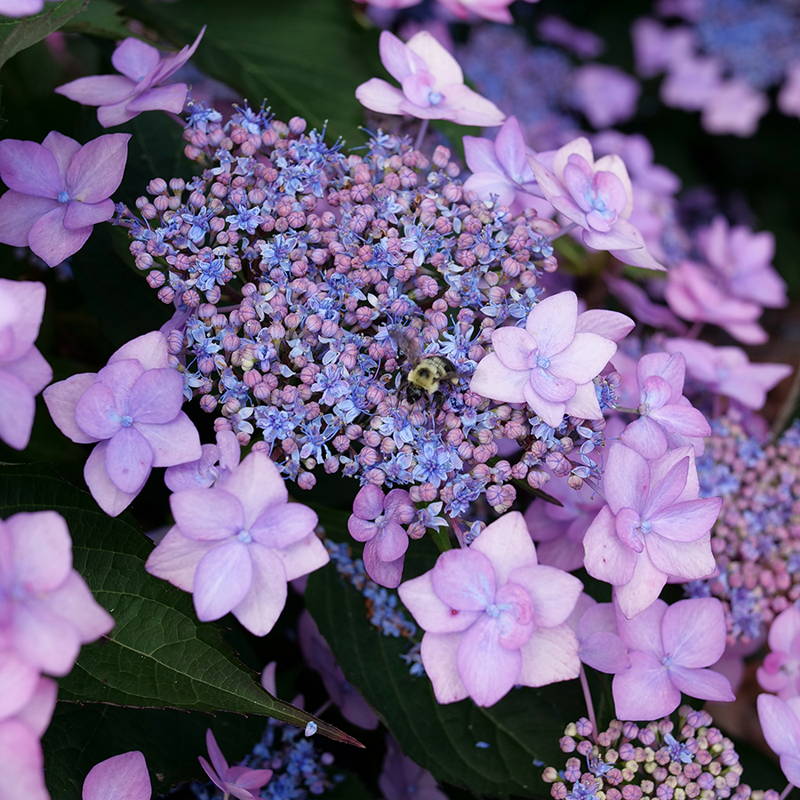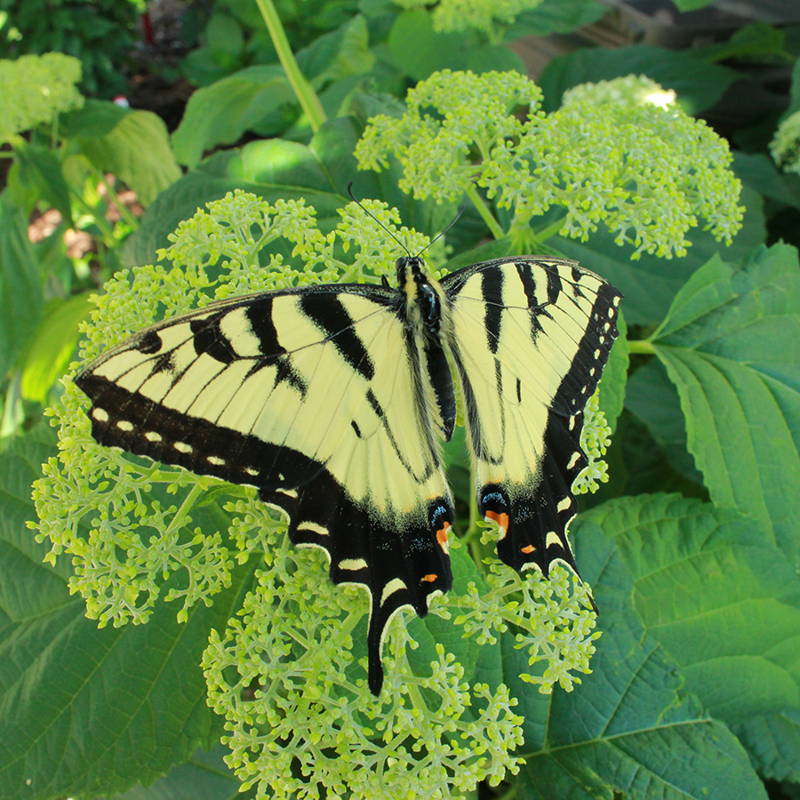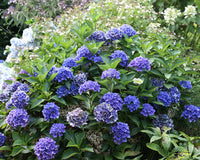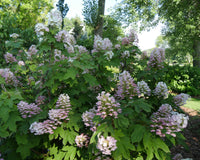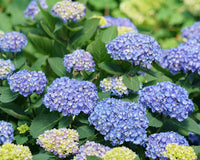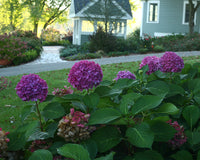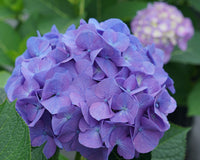While hydrangea shrubs might not be the first to come to mind while building a pollinator garden, there are a few varieties that offer a buffet of nectar and pollen, as well as shelter from the elements. Not all hydrangeas provide much pollinator value - but some varieties, especially those with lacecap flowers, are a haven for pollinators in summer! So if you're looking to make your garden all the buzz this year, consider these pollinator-friendly hydrangeas.
Oakleaf Hydrangea (Hydrangea quercifolia)
Native to North America
Oakleaf hydrangea (Hydrangea quercifolia) is a shrub native to the Southwestern United States woodland areas, growing alongside North American native pollinators for more than 200 years! The panicles are typically lacecap, with easily accessible fertile florets filled with pollen and nectar that attract bees, butterflies, and other pollinators. This shrub also brings some stunning fall color to your pollinator garden, with foliage transitioning to deep red, brown, and purple hues in autumn. Depending on the variety, flowers will also turn pink just before winter, then begin to dry out and fall away, exposing seeds for songbirds, cardinals, and sparrows.
Mountain Hydrangea (Hydrangea serrata)
Native to South Korea and Japan
Hundreds of tiny fertile flowers completely smother mountain hydrangea (Hydrangea serrata), making it an excellent addition to pollinator gardens! This type of hydrangea features a color range that may change depending on your soil pH; regardless, pollinators love the soft blue to pale pink hues that bloom from summer through fall. We also love how mountain hydrangea can easily be grown in containers, meaning gardeners in urban areas can effortlessly support local pollinators.
Smooth Hydrangea (Hydrangea arborescens)
Native to North America
Smooth hydrangea (Hydrangea arborescens) is native to the Eastern United States and features colossal blooms that can come in mophead or lacecap types. Lacecap smooth hydrangea varieties like Invincibelle Lace™ are beloved by bees and butterflies. The spent flowers also provide seeds to songbirds, and its large habit protects native wildlife during chilly temperatures. While varieties with mophead flowers may not offer much nectar or pollen, they are still an important host to the sphinx moth (or hummingbird moth), which pollinates many native plants and serves as a natural composter.
What attracts more pollinators: mophead or lacecap hydrangeas?
Now that we've discussed some of our favorite hydrangeas that attract bees and butterflies let's discuss whether mophead or lacecap is a better addition to your pollinator garden. The answer? Both, but let us explain. According to a study from the Mt. Cuba Center, mophead blooms attract more beetles, true bugs, and flies. In contrast, lacecap blooms seemingly attracted more pollinators like bees, butterflies, and hummingbirds. So, while mophead or lacecap hydrangeas may serve different vital creatures, each type may serve a purpose in a well-rounded garden ecosystem. Learn more about the differences between lacecap and mophead hydrangeas HERE.



